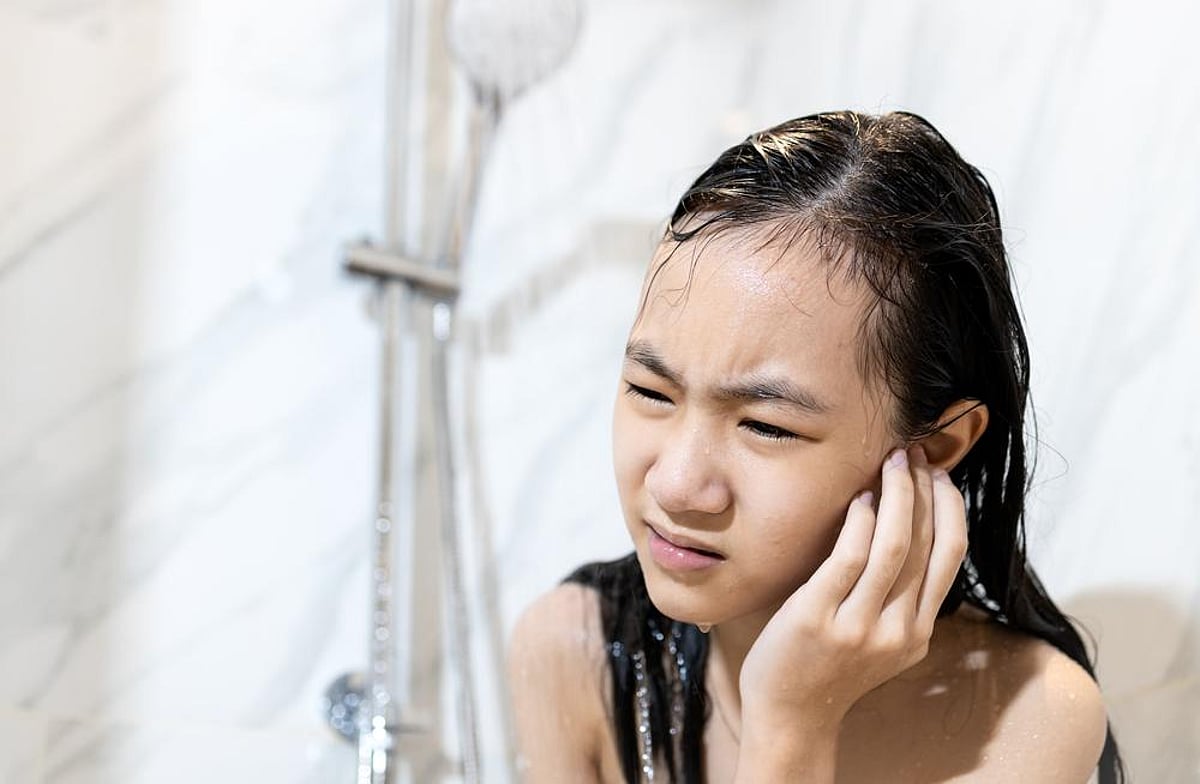Swimmer’s Ear

What is swimmer's ear?
It's an ear infection that kids and adults commonly get by swimming in a pool or lake. Water seeps into the ear canal and erodes its protective lining, making it easier for bacteria and fungi to take hold and multiply. Any infection of the external ear -- that is, in or near the ear canal, as opposed to the middle ear -- is categorized as swimmer's ear.
How could my child get swimmer's ear if she doesn't swim?
Water could get into her ears during a bath or shower. Or she may have also poked something in her ear, setting the stage for an infection. This often happens when a child or parent tries to remove earwax with a cotton swab; some children also like to scratch inside their itchy ears with the swabs. These are both bad ideas, because the earwax actually plays a protective role. It traps dirt and bacteria in the ear canal, and then tiny hairs in the ear canal sweep out the microbe-carrying wax. But if a cotton swab has pushed the wax to the end of the ear canal, the area is much more hospitable to bacteria.
A few skin conditions, including psoriasis and dermatitis, can also make people susceptible to swimmer's ear. In addition, toddlers and young children commonly put small objects, such as beads or bits of food, into their ear canals; these can lead to an infection.
How can I tell if my child has this kind of ear infection?
An infection of the external ear typically begins with itching. As it progresses, it can cause ear pain and tenderness. If your child's pain gets worse when she chews or if you gently tug on her earlobe, she probably has swimmer's ear. (Moving the outside of the ear doesn't bother children with infections of the middle ear.) Check the entrance to her ear as well: You may see redness and scaling. Other symptoms include temporary hearing loss and a yellow, watery, or smelly discharge from the ear.
What are the treatment options?
Although it's wise to have your pediatrician take a look at your child's ear, swimmer's ear usually goes away on its own and responds well to home treatment. Keep the infected ear dry, and put in some antiseptic eardrops from the drugstore (or make your own by mixing 1 part white vinegar and 1 part rubbing alcohol). Leave them in a couple of minutes, with your child lying on her side so that the affected ear is up, then let the ear drain. Hold warm compresses against your child's ear to ease the pain. (You can also give her acetaminophen, but never give aspirin to a child or teenager, as this can sometimes lead to Reye's syndrome, a rare but potentially life-threatening illness.)
Your child's doctor may prescribe eardrops that contain a combination of medicines to bring down the inflammation and to kill the bacteria. If the infection is advanced, your child may need to take antibiotics. Depending on her level of discomfort, she may also need another prescription for pain.
When should I call my pediatrician?
Call your pediatrician if your child:
- Has symptoms that linger for more than four or five days
- Already has an ear infection or repeatedly gets swimmer's ear
- Has diabetes or a weakened immune system
- Has ever had a ruptured ear drum or ear surgery
- Has discharge from the ear or decreased hearing
Get emergency medical help if your child suddenly develops a swollen, moon-shaped face, sharp pain in the ear, and fever. In extremely rare cases, this infection spreads to the inner ear, underlying bone, and bloodstream.
How can I prevent swimmer's ear?
Don't worry about your child catching it from other kids: This infection isn't contagious. But if your youngster is a swimmer, it's best not to let her back in the water until she's completely healed. (Ear plugs don't completely seal out water, so don't depend on them.) You could try mixing some white vinegar with rubbing alcohol and putting a teaspoon of the solution in each of her ears, then drain back out. Call your pediatrician if your child has earwax problems, but don't try removing it yourself: Remember, it's there to protect your child's ears.
References
Robert H. Pantell M.D., James F. Fries M.D., Donald M. Vickery M.D., Taking Care of Your Child: A Parent's Illustrated Guide to Complete Medical Care. Da Capo Press.
American Academy of Pediatrics, Swimmer's Ear, from Caring for Your School-Age Child Ages 5-12
American Academy of Pediatrics, HealthyChildren.org. Swimmer's Ear in Children. http://www.healthychildren.org/English/health-issues/conditions/ear-nose-throat/pages/Swimmers-Ear-in-Children.aspx
American Academy of Family Physicians. Ear Infections: Swimmer's Ear (Otitis Externa). http://familydoctor.org/online/famdocen/home/common/infections/common/bacterial/657.html
Related Posts
Doctors Devise Safer Alternative to Opioids During, After Surgeries
THURSDAY, April 28, 2022 (HealthDay News) -- It's been slightly more than a year...
Bullying Could Help Bring on Headaches for Teens
THURSDAY, Aug. 3, 2023 (HealthDay News) -- So, your high schooler has been...
Cirujano General: los ‘lugares de trabajo tóxicos’ afectan mucho a la salud de los trabajadores
VIERNES, 21 de octubre de 2022 (HealthDay News) -- Casi todo el que se ha...
